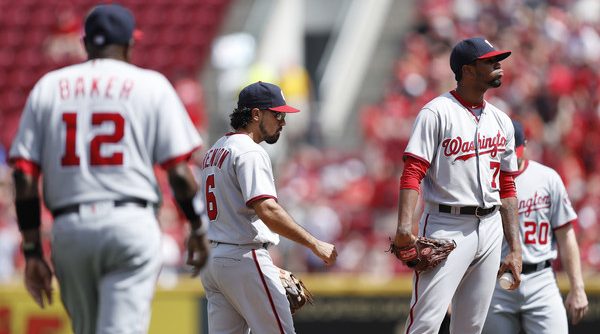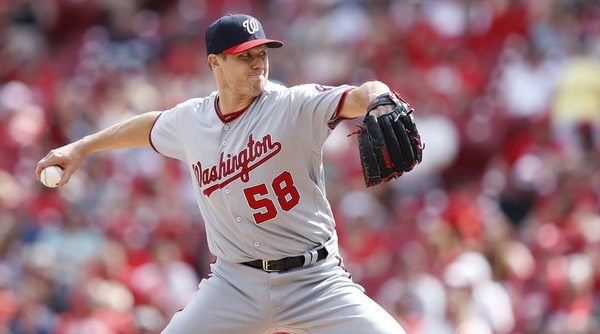Much speculation has swirled around the Nationals potentially acquiring a reliever to beef up the back end of their bullpen. They are frequently named as a suitor for the Yankees’ pair of fireballing lefties: Aroldis Chapman and Andrew Miller. The list doesn’t end there, with Sean Doolittle, Fernando Abad, Jeremy Jeffress, and Alex Colome as members of a very deep group. Suffice it to say, there are quite a few ways the trade deadline could go.
Tag Archives: Oliver Perez
Could the Nats Find a New Closer Without a Trade?
Though the Washington Nationals won on Sunday, the debate concerning their closer role seems to only be getting louder. In a tight bottom of the ninth against the Cincinnati Reds, Jonathan Papelbon allowed one runs on two hits and walked a pair of batters before getting out of a bases-loaded, one-out jam.
The end result was his 15th save of the season, but the performance is unlikely to silence the doubts that have mounted. There have been two reports within the last week—one from Ken Rosenthal of Fox Sports, and another from MLB.com’s Bill Ladson—that the Nationals may explore the trade market for relief help, with Ladson citing a source that says that the team feels that “they can do better” in the closer’s role.
With Papelbon’s velocity and strikeout rates declining, it is fair to question if his stuff will allow him to be a viable option throughout the year. For that reason, the trade rumors will likely persist until the August 1 deadline. However, one possibility that is worth considering is whether the Nationals can stall or completely avoid a trade by going with an internal option.
Looking at the club’s other bullpen options, Shawn Kelley stands out. He has been one of the best relievers in all of baseball this year and has shown better control since the beginning of last season while maintaining strong strikeout numbers.
One minor quibble that can be made about Kelley is that most of his major league experience has come in medium, or low-leverage situations. That should not be held against him, however, as his success against hitters on both sides of the plate, ability to generate softer contact at a higher rate than Papelbon, and peripheral numbers — including a 2.47 FIP and 2.82 xFIP entering Sunday — make him worthy of consideration.
Beyond Kelley, the Nationals’ options come with their own set of question marks. Felipe Rivero possesses more prototypical closer’s stuff—and while his excellent strikeout-to-walk numbers indicate that he is better than what his 5.21 ERA suggests—it might take a more consistent stretch of production for him to be considered. Sammy Solis has earned favor with Dusty Baker, but his lack of experience could limit him to long and middle relief situations, also scenarios in which Oliver Perez and Yusmeiro Petit are likely to stay. That leaves Blake Treinen, who has excellent stuff but whose inability to avoid hard contact against lefties has continued this year.
Should the Nationals look to their farm system for help, Koda Glover’s name will undoubtedly arise. The eighth-round selection from last year has stood out among relief prospects, dominating at High-A Potomac before his promotion to Double-A Harrisburg, where he has fanned 22 batters in 15 2/3 innings. The New York Post’s Joel Sherman wrote Sunday that “every scout I speak with says (Glover) is a young Trevor Rosenthal.” Glover possesses the makings of a late-inning reliever, but it remains to be seen if the Nationals will make an aggressive push during his first full season.
There are numerous options at Triple-A Syracuse with prior major league experience—including Abel De Los Santos, Trevor Gott, and Matt Grace — though none stand out as potential closers. Speculation might arise that a starting prospect — such as Reynaldo Lopez — could move to the bullpen to provide short-term insurance, but that seems like a rash decision and one that goes against the Nationals’ habits in developing major league starters.
If Papelbon’s inconsistencies continue, the Nationals should give Kelley the opportunity to close. He is their best internal option, and may allow them to avoid trading for a closer for the second consecutive summer.


